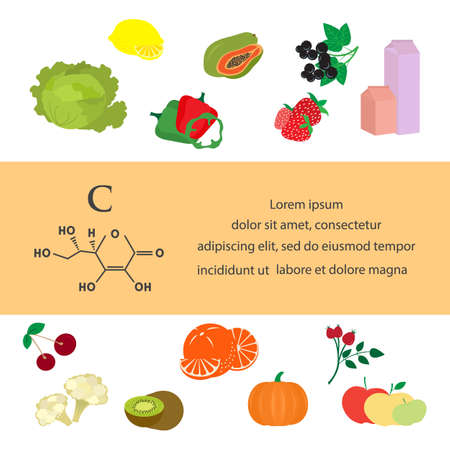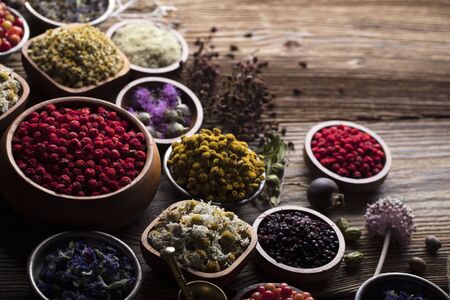Introduction to British Superfoods
When we speak of superfoods in the British context, we are referring to a selection of native and naturalised plants, fruits, and herbs celebrated for their dense nutritional content and potential health benefits. Unlike the imported goji berries or acai, British superfoods are rooted in the very landscapes that define the UK—from hedgerows and woodlands to windswept coastlines. Historically, these foods have played a quiet but significant role in local diets and folk medicine traditions. Examples include blackcurrants, which are rich in vitamin C; elderberries, prized for their immune-boosting properties; sea buckthorn from coastal dunes; and the humble nettle, once a staple green used for both food and remedy. In recent years, there has been renewed interest in these traditional ingredients as part of contemporary wellness trends. This resurgence highlights how British superfoods bridge ancient knowledge and modern health needs, offering both a sense of cultural continuity and practical nourishment suited to our climate and environment.
2. Historical Use of Superfoods in British Folk Medicine
The roots of British folk medicine are deeply intertwined with the island’s landscape and its native flora. For centuries, communities across England, Scotland, Wales, and Northern Ireland have turned to indigenous plants and natural foods—now recognised as “superfoods”—for both nourishment and healing. The knowledge of these remedies has traditionally been passed down through oral history, local customs, and regional manuscripts.
Common Indigenous British Superfoods in Folk Remedies
Many of the superfoods celebrated today for their health benefits were once central to folk healing practices. Elderberries, nettles, sea buckthorn, and dandelion are just a few examples. Below is a table summarising some notable British superfoods and their historical uses in traditional medicine:
| Superfood | Region | Traditional Uses |
|---|---|---|
| Elderberry | Nationwide | Used in syrups and cordials to combat colds and flu; believed to boost immunity. |
| Nettle | England & Wales | Brewed as tea for detoxification; used in poultices to soothe joint pain. |
| Sea Buckthorn | Scottish coasts | Consumed for its vitamin-rich berries; applied topically for skin health. |
| Dandelion | Nationwide | Roots used as a tonic for digestion and liver function; leaves added to salads for overall vitality. |
Regional Anecdotes and Historical Records
Anecdotal evidence from rural Yorkshire describes families gathering elderflowers each spring to make cordial, a remedy cherished not only for its taste but also for its reputed ability to ward off seasonal ailments. In the Scottish Highlands, sea buckthorn berries were prized by crofters who braved harsh coastal winds, believing the berries fortified them against winter chills. In Welsh valleys, nettle soup was a spring staple, thought to revitalise after long winters.
The Role of Local Healers and Herbalists
Local healers—often known as ‘cunning folk’ or wise women—played a vital role in preserving this botanical knowledge. They would prepare tinctures, teas, and ointments from locally sourced plants. Manuscripts such as the 17th-century ‘Leechbook of Bald’ document recipes that include these very superfoods, reflecting both empirical experimentation and regional tradition.
Cultural Continuity into Modern Times
The enduring use of these superfoods in contemporary Britain owes much to this rich tapestry of folk practice. While modern science has validated many of these traditional remedies, it is the lived experience—passed down through generations—that continues to shape British attitudes towards natural health today.

3. Science Behind Superfoods: Nutrition and Health Benefits
The contemporary interest in British superfoods is not merely a nostalgic nod to the past; it is increasingly underpinned by robust scientific research. Many of the native foods once celebrated in folk medicine—such as blackcurrants, nettles, elderberries, and sea buckthorn—are now recognised for their impressive nutritional profiles and potential health-promoting properties. Modern nutritional science has confirmed that these traditional ingredients are rich sources of essential vitamins, minerals, antioxidants, and phytonutrients. For instance, blackcurrants are exceptionally high in vitamin C and anthocyanins, compounds linked to immune support and reduced inflammation. Similarly, nettles offer a significant amount of iron and calcium, while elderberries have been studied for their antiviral properties. Sea buckthorn stands out due to its unique combination of omega fatty acids rarely found in plant sources.
Current studies from UK universities and international research bodies suggest that regularly incorporating these superfoods into one’s diet may contribute to improved cardiovascular health, enhanced immune response, and even cognitive benefits. The antioxidant activity present in many of these native plants helps combat oxidative stress, which is associated with ageing and chronic disease. While the precise mechanisms are still being explored, preliminary evidence supports some of the traditional claims made about these foods in folk remedies. However, it is important to approach these findings with measured optimism; although British superfoods offer meaningful health benefits as part of a balanced diet, they are not cure-alls. Ultimately, the intersection of tradition and science provides a promising foundation for appreciating and utilising British superfoods in modern wellness practices.
4. Modern Applications in British Diet and Wellness
The resurgence of interest in British superfoods has seen these traditional ingredients reimagined within the framework of contemporary UK diets and wellness trends. No longer limited to folklore remedies or rural kitchens, superfoods like blackcurrants, sea buckthorn, watercress, and nettles are now celebrated on restaurant menus, incorporated into packaged health foods, and recommended by nutritionists across the country.
Integration into Everyday Meals
British superfoods have found their way into a variety of everyday meals, appealing to both health-conscious consumers and food enthusiasts. For example, watercress is featured in fresh salads and green smoothies, while blackcurrants are popular as toppings for porridge or yoghurt. Sea buckthorn is increasingly used in juices and herbal teas due to its reputed high vitamin C content. The table below illustrates some common modern uses:
| Superfood | Contemporary Use | Associated Health Trend |
|---|---|---|
| Blackcurrant | Porridge toppings, smoothies, snack bars | Antioxidant-rich diets |
| Watercress | Salads, green juices, pesto | Detoxification & immune support |
| Sea Buckthorn | Herbal teas, juice blends, supplements | Vitamin C supplementation |
| Nettle | Herbal infusions, soups, bread recipes | Gut health & anti-inflammatory diets |
Influence on Food Culture and Trends
The inclusion of these superfoods in modern British cuisine reflects broader food culture shifts towards sustainability and locally-sourced produce. Many restaurants now prioritise seasonal ingredients and promote dishes featuring native superfoods as a nod to heritage and environmental responsibility. Meanwhile, supermarkets have expanded their ranges to include British-grown berries, leafy greens, and plant-based snacks that reference these traditional powerhouses.
The Rise of Functional Foods and Supplements
The commercial market for functional foods—products designed with specific health benefits—has grown significantly in the UK. Superfood powders made from kale or elderberries are added to breakfast cereals or energy balls. Supplement brands highlight the provenance of their ingredients to appeal to consumers seeking authenticity alongside efficacy.
Cultural Acceptance and Future Potential
This renewed appreciation for British superfoods is not merely a trend; it signals a reconnection with local traditions adapted for modern lifestyles. As research continues to validate the health benefits attributed to these foods in folk medicine, their role in supporting public health and sustainable agriculture is likely to expand further in the coming years.
5. Challenges, Sustainability, and The Future of British Superfoods
The growing interest in British superfoods has brought with it a set of unique challenges, especially concerning sourcing and sustainability. While many traditional folk remedies relied on foraged or locally grown ingredients such as nettles, elderberries, and sea buckthorn, contemporary demand risks placing strain on local ecosystems if harvesting is not managed carefully. Ethical sourcing is vital—not only to protect native plant populations but also to ensure that communities benefit from their natural heritage without exploitation or depletion.
Another consideration is the environmental impact of modern agricultural practices. As certain superfoods gain popularity, the temptation to cultivate them intensively increases. However, monoculture farming can reduce biodiversity and harm soil health, contradicting the very principles that make these foods valuable in traditional medicine—namely, their rootedness in the local environment and seasonal cycles. Supporting small-scale growers, community gardens, and sustainable wild-harvesting initiatives can help preserve both the land and the cultural knowledge tied to these plants.
The evolving perception of superfoods within British society also presents opportunities and obstacles. While public awareness about nutrition and holistic health continues to rise, there remains a risk of commodification—whereby foods once valued for their community use become premium products accessible only to a select few. This shift can overshadow the humble origins of many British superfoods and diminish their role in everyday wellness for all social groups.
Looking ahead, the future of British superfoods depends on balancing innovation with tradition. Researchers are increasingly interested in scientifically validating the benefits of native botanicals used in folk medicine, potentially unlocking new applications in modern healthcare. Yet, it is essential to maintain respect for traditional knowledge and ensure that commercialisation does not erode cultural practices or ecological integrity.
Ultimately, embracing sustainability at every stage—from wild harvesting to commercial distribution—will be key to safeguarding the rich legacy of British superfoods. By fostering collaboration between farmers, scientists, herbalists, and local communities, Britain can continue to celebrate its botanical diversity while promoting health in ways that are both ethical and enduring.


